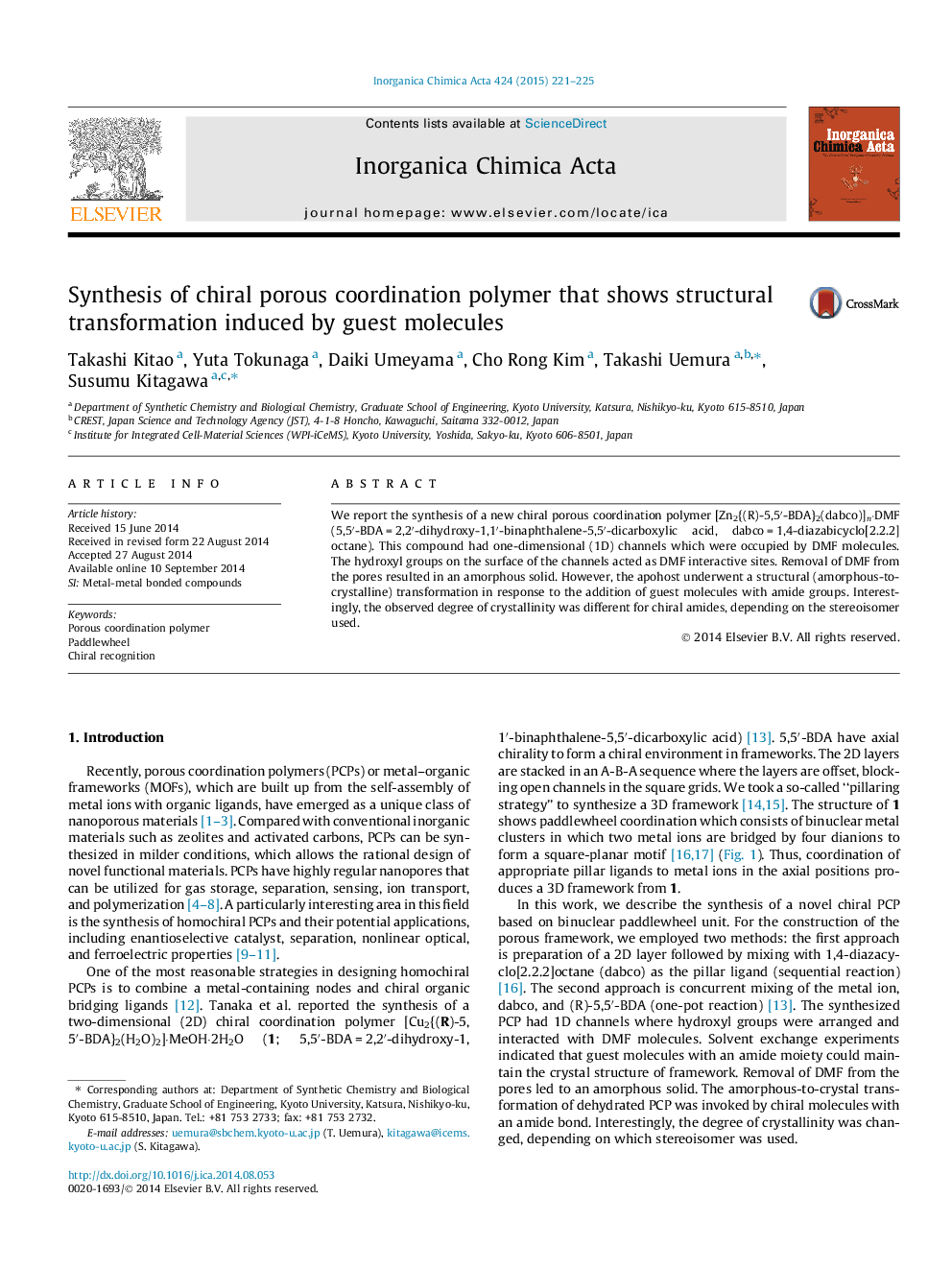| Article ID | Journal | Published Year | Pages | File Type |
|---|---|---|---|---|
| 1312154 | Inorganica Chimica Acta | 2015 | 5 Pages |
•A new chiral porous coordination polymer (2) was synthesized.•Removal of DMF molecules from the pores resulted in the amorphous solid (2′).•Addition of molecules with amide moiety to 2′ led to the original structure.•The degree of crystallinity was changed, depending on the stereoisomer used.
We report the synthesis of a new chiral porous coordination polymer [Zn2{(R)-5,5′-BDA}2(dabco)]n·DMF (5,5′-BDA = 2,2′-dihydroxy-1,1′-binaphthalene-5,5′-dicarboxylic acid, dabco = 1,4-diazabicyclo[2.2.2]octane). This compound had one-dimensional (1D) channels which were occupied by DMF molecules. The hydroxyl groups on the surface of the channels acted as DMF interactive sites. Removal of DMF from the pores resulted in an amorphous solid. However, the apohost underwent a structural (amorphous-to-crystalline) transformation in response to the addition of guest molecules with amide groups. Interestingly, the observed degree of crystallinity was different for chiral amides, depending on the stereoisomer used.
Graphical abstractWe report the synthesis of a new chiral porous coordination polymer [Zn2{(R)-5,5′-BDA}2(dabco)]n·DMF (5,5′-BDA = 2,2′-dihydroxy-1,1′-binaphthalene-5,5′-dicarboxylic acid, dabco = 1,4-diazabicyclo[2.2.2]octane). This compound had one-dimensional (1D) channels which were occupied by DMF molecules. The hydroxyl groups on the surface of the channels acted as DMF interactive sites.Figure optionsDownload full-size imageDownload as PowerPoint slide
